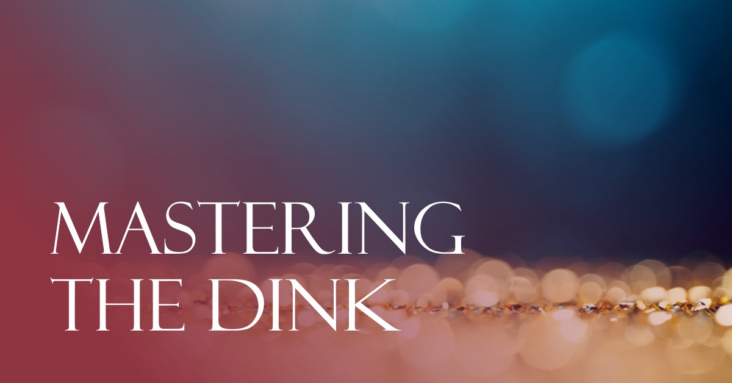Dinking is a pivotal skill in pickleball, involving a soft, controlled shot played at the net. This technique is essential for setting up offensive plays and prolonging rallies. Despite its importance, dinking is often riddled with mistakes, particularly among novices.
Pickleball pro player and coach Will East shares insights into the three most frequent errors players make when dinking and provides expert advice on how to rectify them.
1. Overhitting Instead of Pushing the Ball
One of the most common mistakes players make is approaching the dink with excessive force, causing the ball to pop up and present an easy target for opponents. Will East’s advice is both simple and transformative: envision pushing the ball rather than hitting it. This technique emphasizes control over power, ensuring the ball remains low and challenging for opponents to attack.
Practice Drill: The Bean Bag Method
To master this technique, Will suggests a unique drill involving a bean bag. Place the bean bag on your paddle and practice moving it back and forth. This drill helps you get accustomed to the sensation of pushing without relying on wrist action.
- Keep the Paddle Face Open: This encourages a gentle pushing motion.
- Focus on Control: Emphasize smooth, controlled movements.
This practice significantly enhances the effectiveness of your dinks, making them more consistent and controlled.
2. Excessive Wrist Movement
A “floppy” wrist can result in inconsistent and uncontrollable dinks. To counter this, Will recommends stabilizing the wrist by using the opposite hand. For right-handed players, this means using the left hand to physically limit the wrist’s movement during the dink.
Technique: Stabilize the Wrist
- Use the Opposite Hand: Physically restrict wrist movement.
- Body Motion Over Wrist Flicks: Guide the dink with your body’s motion rather than relying on wrist flicks.
This practice helps maintain a firm wrist, allowing for better control and precision. The goal is to use your body’s motion to guide the dink, resulting in more consistent and accurate shots.
3. Standing Too Upright During a Point
Another common error is playing the dink from an overly upright stance. Standing tall during a dink shot disconnects the player from the optimal hitting zone, leading to a lack of control and accuracy. Will emphasizes the importance of getting low to the ground, keeping your head level with the ball.
Technique: Maintain a Low Stance
- Get Low: Keep your head level with the ball.
- Enhance Precision: A lower stance improves your ability to see and hit the ball accurately.
By maintaining a lower stance, players can better manage the pace and direction of the dink, making it a more effective tool in their pickleball arsenal.
Conclusion: Elevating Your Game
Will East’s guidance on correcting these common dinking errors is invaluable for players aiming to advance their game from a 3.0 to a 4.0 level. By focusing on pushing rather than hitting, stabilizing the wrist, and maintaining a low stance, players can significantly improve their dink shots, transforming them into a strategic weapon rather than a liability.
For more tips and techniques on improving your pickleball game, visit our comprehensive guide on pickleball strategies.
Frequently Asked Questions
Q. What is the primary goal of dinking in pickleball?
Answer: The primary goal of dinking is to control the pace of the game, set up offensive plays, and extend rallies by keeping the ball low and difficult for opponents to attack.
Q. How can I practice pushing the ball instead of hitting it?
Answer: Use the bean bag drill suggested by Will East. Place a bean bag on your paddle and practice moving it back and forth to get accustomed to the sensation of pushing without relying on wrist action.
Q. Why is wrist stability important in dinking?
Answer: A stable wrist ensures better control and precision, reducing the likelihood of erratic shots. Using the opposite hand to limit wrist movement can help maintain a firm wrist during dinks.
Q. How does a low stance improve my dinking?
Answer: A low stance keeps your head level with the ball, enhancing your ability to see and hit the ball accurately. It also improves control and precision, making your dinks more effective.



